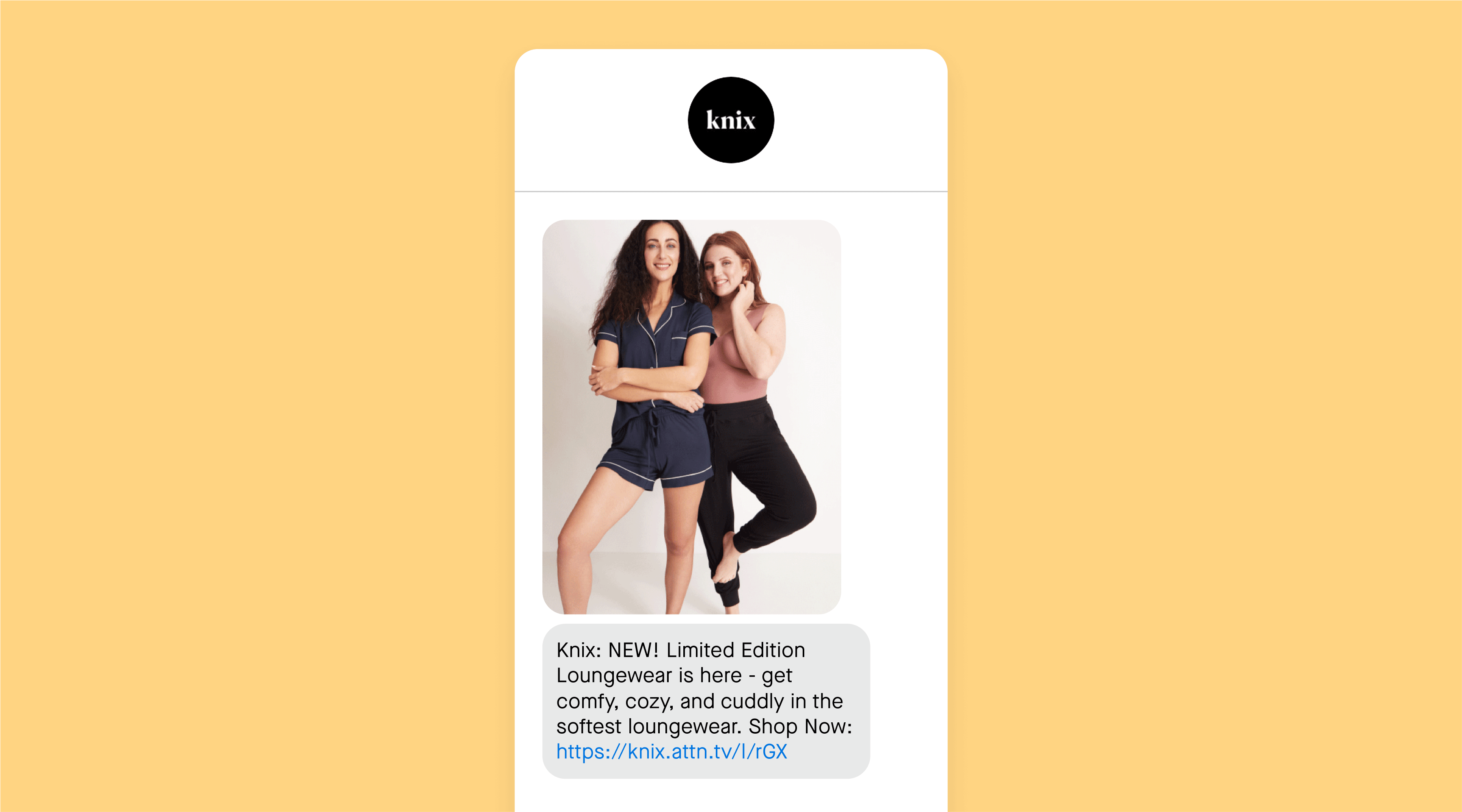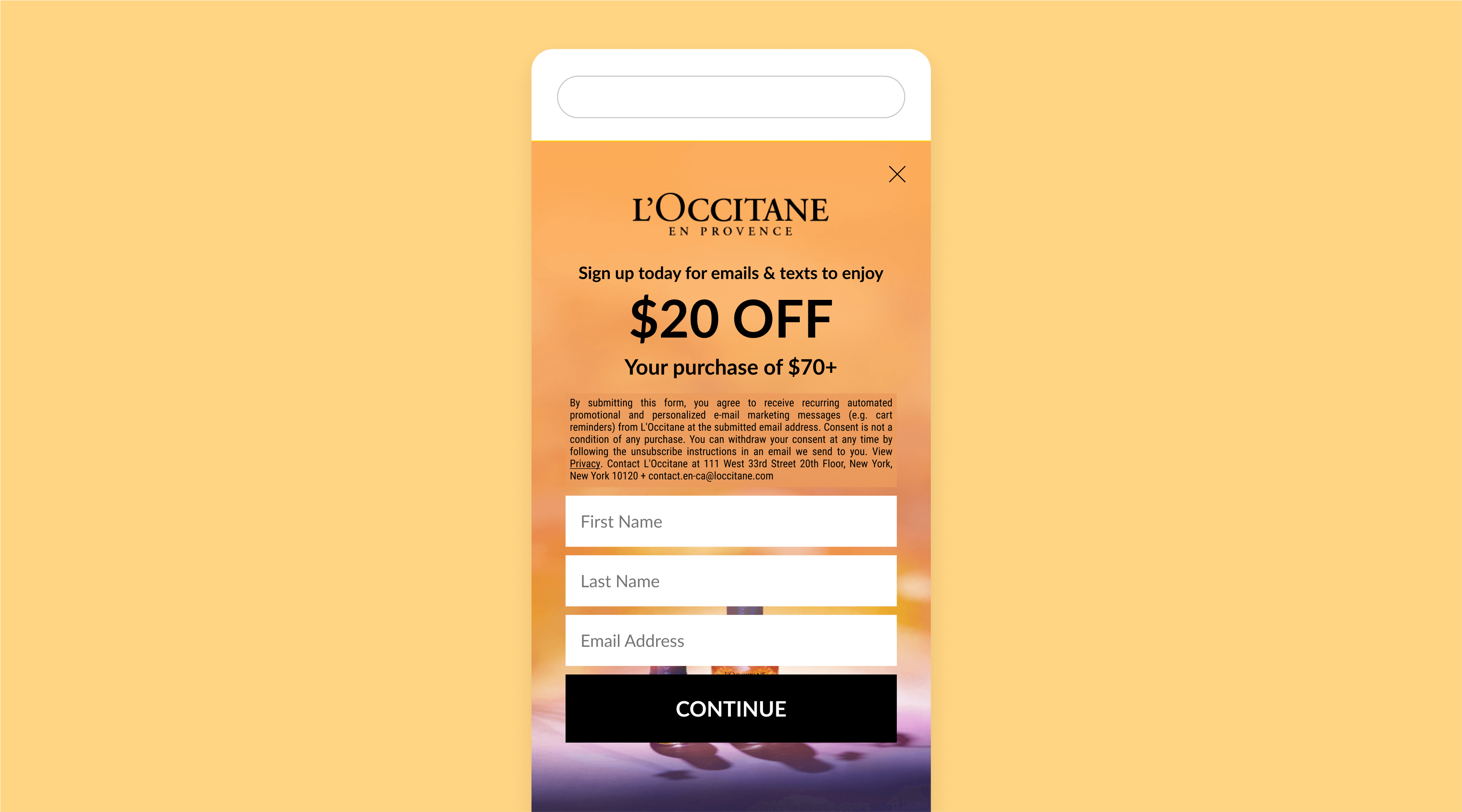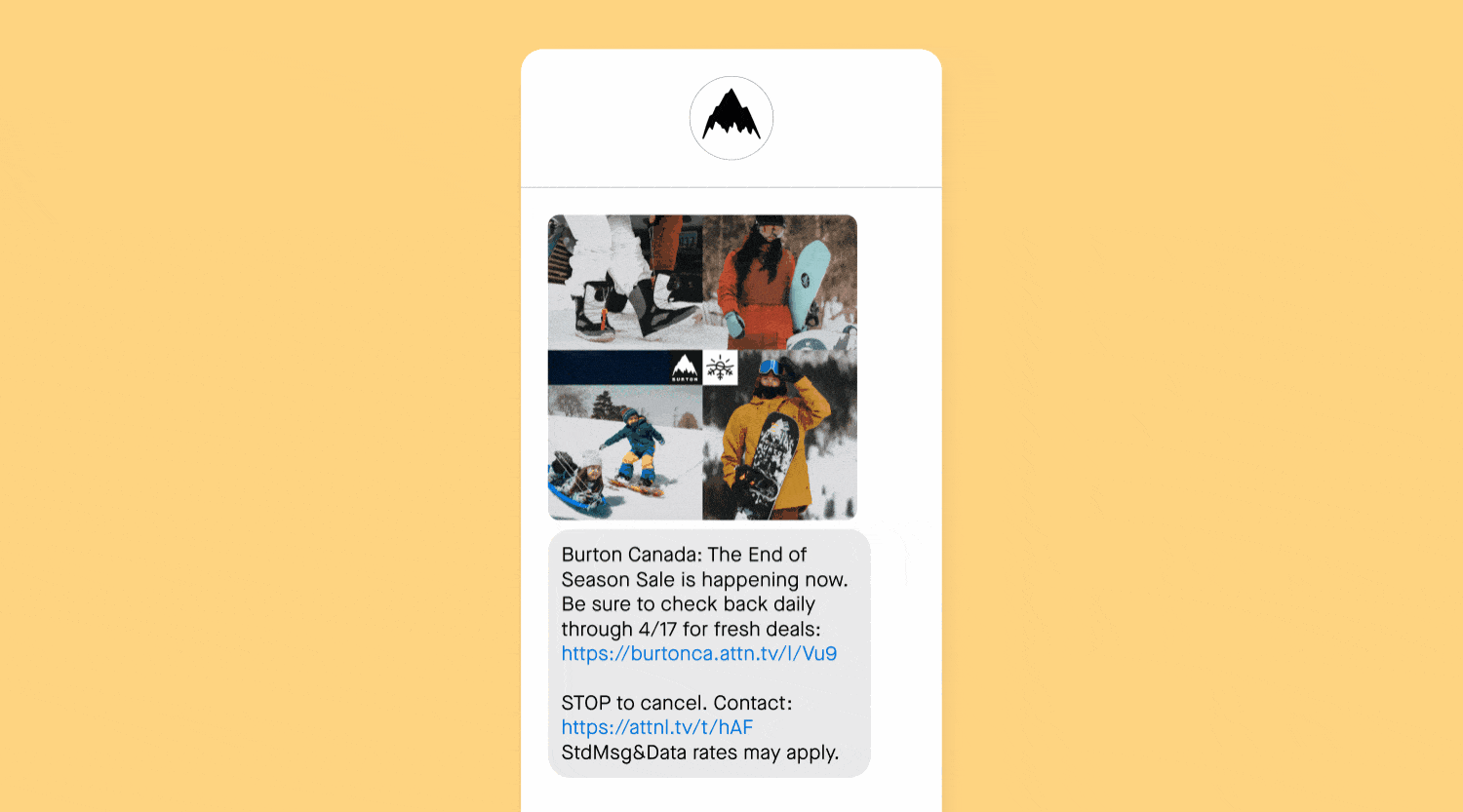
New releases
A smarter, simpler Attentive
Explore new features →
Explore new features →

Today’s consumers value convenience above all else. And they expect highly personalized experiences from brands. In the US, marketers who’ve added SMS to their toolkits are meeting and exceeding these consumer expectations, and they see SMS as a critical channel for acquiring and retaining customers.
A recent survey found that 81% of US retailers have invested in SMS (or plan to soon). Brands who partner with Attentive are seeing 99% open rates and are driving $55 in sales for every $1 spent.
Canadian marketers have a similar opportunity to take advantage of this powerful channel. Our 2022 survey of 500 Canadian consumers found that although they want to hear from brands via SMS, many brands aren’t yet meeting them there.
Keep reading for more key findings, and learn how you can apply these insights toward a successful and integrated SMS marketing program.
Canadian consumers are eager to communicate with their favorite brands via text messaging. 95% of them want to hear from brands at least once a week, and 44% want to hear from brands multiple times a week.
Because many want to hear from brands once a week or more, text messages need to be personalized and provide some sort of value to the subscriber. You should also plan to send a mix of one-time campaign messages and triggered messages.
For campaign messages, you can text your full list, or incorporate segmentation to target specific groups within your SMS subscriber base (e.g., engaged vs. unengaged, past purchasers vs. non-purchasers).
Because triggered messages are sent based on some sort of action or behavior your subscriber took—such as opting in to your SMS program, or abandoning their online cart—you can use them to tailor your messaging across the customer journey.

For example, your welcome message is the first interaction subscribers have with your brand’s SMS program. Consider sending them a discount or offer as part of this text message to start things off on the right foot.
When sending abandoned cart reminders, be sure to include the name of the item they left behind, and link them back to their online cart to make it as easy as possible to complete their purchase.
Transactional messages—like order confirmations, shipping updates, and delivery notifications—are great for keeping customers informed on their purchases. But 49% of consumers want brands to go beyond transactional text messaging.
Getting exclusive VIP perks and discounts is the number one reason consumers want to hear from brands—and 69% said they’d subscribe to SMS for that access.

They’re also interested in finding out about new products, with 49% saying they’d want to get a text when a new product launches. SMS is one of the best marketing channels for generating buzz around an upcoming product, creating a successful launch day, and keeping subscribers engaged after the launch.

For example, before you release your product or collection, you can customize your SMS sign-up unit to tease what’s coming, and to let shoppers know they’ll get first access if they subscribe to your texts. Then, on launch day, text your subscribers to let them know they get first access and can start shopping. After launch, use segmentation to remind non-purchasers that you have a new product or collection available (without over-messaging subscribers who’ve already bought it).
Overall, consumers want curated and authentic experiences. They’re interested in text messages that provide value, and that highlight how well a brand understands them. This could mean texting them a reminder of an unused perk or discount, or notifying them that an item they were interested in is back in stock.
List growth should always be a top priority, whether you’re just getting started with SMS, or you’re trying to scale your channel further. Make it as easy as possible for shoppers to sign up for your text messages, create opt-in opportunities across your channels (like your website, email, and social media profiles), and determine an incentive strategy that works best for your brand.

While 76% of Canadian consumers said a discount code was their preferred SMS sign-up incentive, you don’t always have to offer a discount. Other sign-up incentives most likely to encourage them to subscribe include free gift with their purchase (66%), and loyalty or reward points (65%).
Be sure to keep a close eye on your list growth performance to identify what’s working best for your brand, and refine your strategy based on what your data is telling you. Pay attention to key metrics like new subscribers, join date, and sign-up source.
Test out different incentives to learn what’s most likely to convert browsers into SMS subscribers (for example, dollar-off discounts vs. percentage-off discounts; loyalty points vs. free gift with purchase).
You should also monitor which of your marketing channels are driving the most list growth so you can focus your efforts where you see the biggest impact. Continue to analyze performance and refine your list growth strategy over time.
74% of respondents who subscribe to at least one brand’s text marketing program reported having made a purchase from a text message within the last month. When asked what kind of SMS content would make them most likely to complete a purchase, their top answers included messages tied to a loyalty program, a soon-to-end sale or offer, or a back-in-stock reminder.

Each of these message types includes content that provides value for the subscriber and has some sort of immediacy. For example, if a subscriber is part of your loyalty program, they’ll want to know ASAP when they have a reward or perk to use, or if they get to be the first to shop a new product or sale.
Or, if a subscriber has their eye on something that was previously sold out—but is now back in stock—getting a text message to shop it before it’s gone is very likely to drive a purchase.
Just keep in mind that your brand’s SMS subscribers are unique and might prefer other types of messages. Try A/B testing elements of your text message such as copy, offer, send time, and more so you can learn what resonates with them.
When it comes to email and SMS, it’s not an either/or. SMS is a great complement to other marketing channels you’re using (like email), and can act as a more immediate engagement channel.
Of the respondents who are subscribed to both SMS and email, 79% say they do so to get updates on products, promotions, and offers immediately, and 52% said SMS is more convenient to open than email. But email is still important—of those who subscribe to SMS messages from brands, 92% also subscribe to email programs.
If you’re looking to get a better understanding of how to use email and SMS together, be sure to check out our Email Marketer’s Guide to SMS.
For consumers, the priority when communicating with brands for customer service is a fast response time. SMS provides the immediacy they’re looking for when they need help, and offers a more 1:1 experience that happens in real time.
51% of survey respondents said they were likely or extremely likely to interact with a brand for customer service via text message, yet many brands aren’t offering it yet. Delivering customer service and support through text messaging is a major opportunity for brands to build loyalty throughout the customer lifecycle.
Canadian consumers have made it clear that they want to get text messages from their favorite brands. It’s become a differentiator for those who offer it to consumers—and a missed opportunity for those who don’t.
For more insights on how Canadian shoppers are engaging with brands via text messaging, download our 2022 Canada SMS Marketing Consumer Trends Report.
Looking to reach Canadian consumers with text message marketing? Request a demo to see why 5,000+ brands partner with us to create personalized mobile experiences.
*All Canadian consumer data points included in this blog post are sourced from Attentive’s International Survey, conducted in April 2022, with responses from 500 CA consumers.